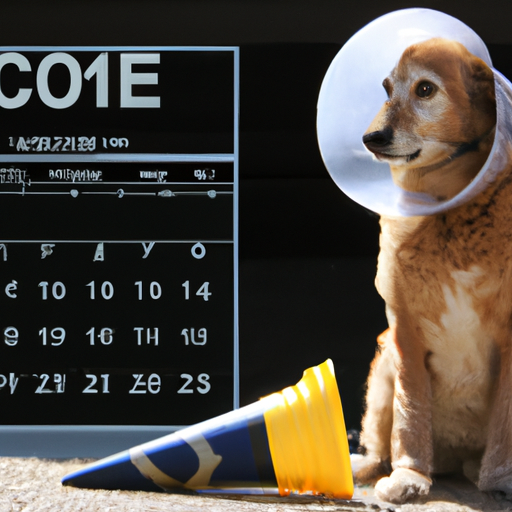As responsible caregivers for our furry friends, we sometimes have to make decisions that may cause temporary discomfort for the long-term health of our pets. Spaying is one such decision. It’s a common practice, but the period afterward can be uncomfortable for our canine companions. One common question that arises is: how long do dogs need to wear a cone after spay?
Table of Contents
- Understanding the Purpose of the Cone
- How Long Should the Cone Stay On?
- Tips for Making the Cone Period Comfortable
- Alternatives to Cones
- Frequently Asked Questions
Key Takeaways
- The cone, or E-collar, protects your dog from licking or scratching at their incision site.
- Most vets recommend keeping the cone on for 10 to 14 days after the spay surgery.
- Make the cone period comfortable by providing a comfortable bed and monitoring your dog’s behavior.
- There are alternatives to traditional cones like inflatable collars or recovery suits.
- Always consult with your vet for personalized advice.
Understanding the Purpose of the Cone
After your dog has been spayed, the vet will typically fit her with a cone, also known as an Elizabethan collar, or E-collar. This device is designed to prevent your dog from licking or scratching at the incision site, which could lead to infection or other complications. It’s an essential part of the recovery process, even though it may seem uncomfortable or distressing for your dog at first.
You may also be interested in OneTopDog’s guide to understanding your dog’s behavior during this recovery period.
How Long Should the Cone Stay On?
The duration of cone use can vary depending on your dog’s specific situation, but most vets recommend keeping the cone on for 10 to 14 days after the surgery. This is typically how long it takes for the incision to heal. However, the exact timing may depend on your dog’s age, overall health, and how quickly she heals.
Remember, it’s always best to follow your vet’s advice regarding cone use. If you’re unsure, don’t hesitate to contact your vet or check out this informative article from the University of Illinois College of Veterinary Medicine.
Tips for Making the Cone Period Comfortable
- Provide a Comfortable Bed: Your dog’s regular sleeping position might be disrupted by the cone. Consider providing a bed that supports her neck and head.
- Monitor Your Dog’s Behavior: Keep a close eye on your dog to ensure she is eating, drinking, and going to the bathroom normally.
- Keep the Cone Clean: It can easily get dirty from food or debris, so clean it regularly to prevent any discomfort or potential infections.
You can visit OneTopDog’s post on pet health for more tips on taking care of your dog during this time.
Alternatives to Cones
While cones are the most common solution, there are alternatives available. These include inflatable collars, which are more comfortable, but still prevent your dog from reaching her incision; and recovery suits, which are essentially onesies for your dog, protecting the incision site while offering more freedom than a cone.
It’s worth noting that these alternatives might not be suitable for all dogs, and it’s important to discuss any changes with your vet before proceeding. OneTopDog’s review of dog recovery cones and alternatives provides valuable insights into these options.
Frequently Asked Questions
Q: My dog is extremely distressed with the cone. What should I do?
A: It’s normal for dogs to be uncomfortable with the cone initially. However, if your dog’s distress doesn’t subside, or if she is unable to eat or drink, contact your vet for advice.
Q: Can I take the cone off when I’m supervising my dog?
A: It’s best to keep the cone on at all times. Even under supervision, dogs can quickly lick or scratch at their incision, potentially causing harm.
Q: My dog got spayed several days ago and seems fine. Can I remove the cone?
A: It’s important to keep the cone on for the recommended period, even if your dog seems fine. This prevents late-onset complications.
In conclusion, while the post-spaying period can be a challenging time for both you and your dog, understanding the importance of the cone and how to make it a comfortable experience can greatly ease this process. Remember to always consult with your vet for any questions or concerns. Here’s to a swift and smooth recovery for your furry friend!



